In today’s digital age, we spend an increasing amount of time in front of screens, whether for work or leisure.
I’ve noticed that the strain on my eyes can really add up, leading to discomfort and even long-term issues if I’m not careful. It’s essential to adopt practices that support our eye health and help reduce the negative effects of screen time.
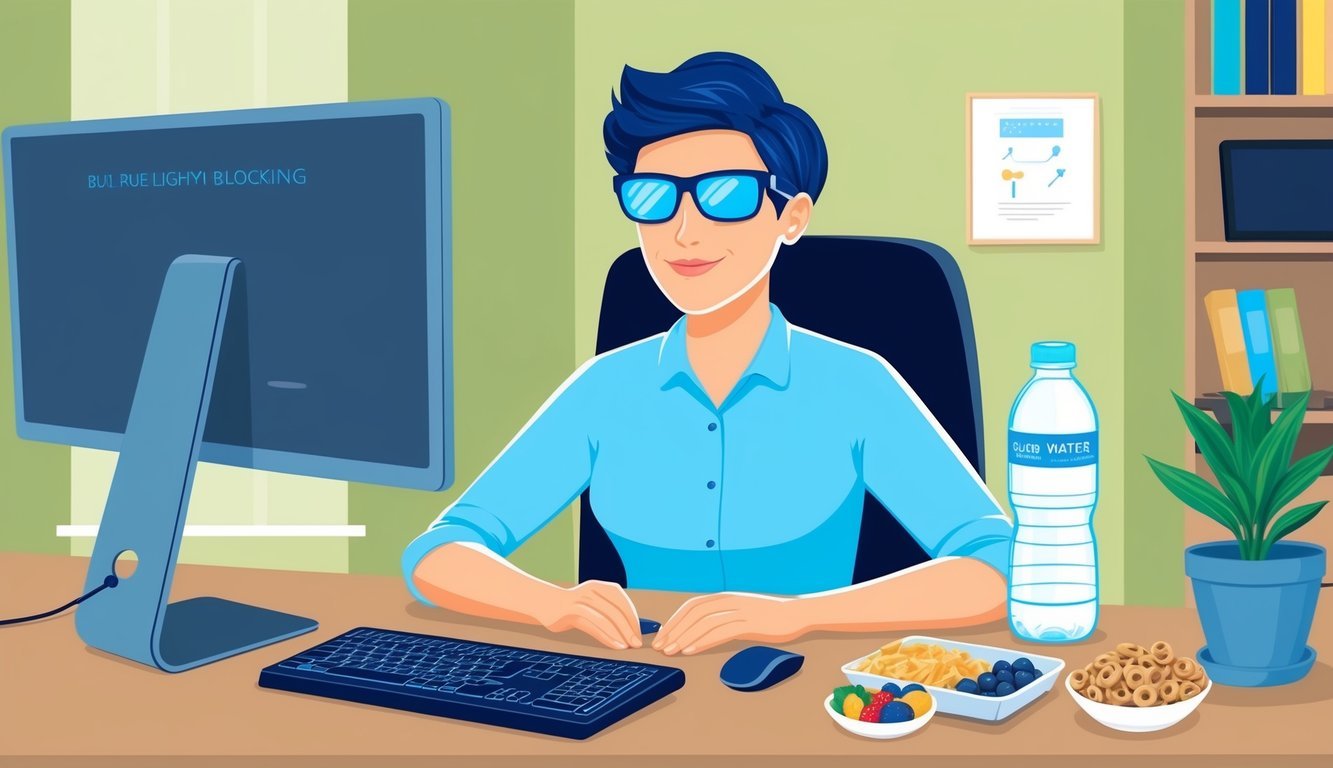
Understanding how to protect our eyes is crucial as technology continues to play a significant role in our daily lives.
I often find myself looking for effective strategies to alleviate the strain I experience and maintain my overall eye well-being.
Making informed choices can make a world of difference in how we feel and function every day.
Use the 20-20-20 Rule
I’ve found that using the 20-20-20 rule is a simple yet effective way to ease eye strain when I’m staring at a screen for long periods.
The idea is straightforward: for every 20 minutes spent looking at a digital device, I take a break and look at something 20 feet away for about 20 seconds.
This technique helps my eyes refocus and reduces fatigue.
It’s an easy habit to build.
Setting a timer on my phone or computer can remind me to take these breaks.
When I look at something far away, my eye muscles relax.
I often use this moment to stretch or take a deep breath, which feels refreshing.
I also love to look out the window if I can.
Nature or distant buildings are great for this purpose.
By incorporating the 20-20-20 rule into my routine, I notice a significant reduction in discomfort after long hours of screen time.
It’s a small change that makes a big difference in my eye health.
Adjust Screen Brightness
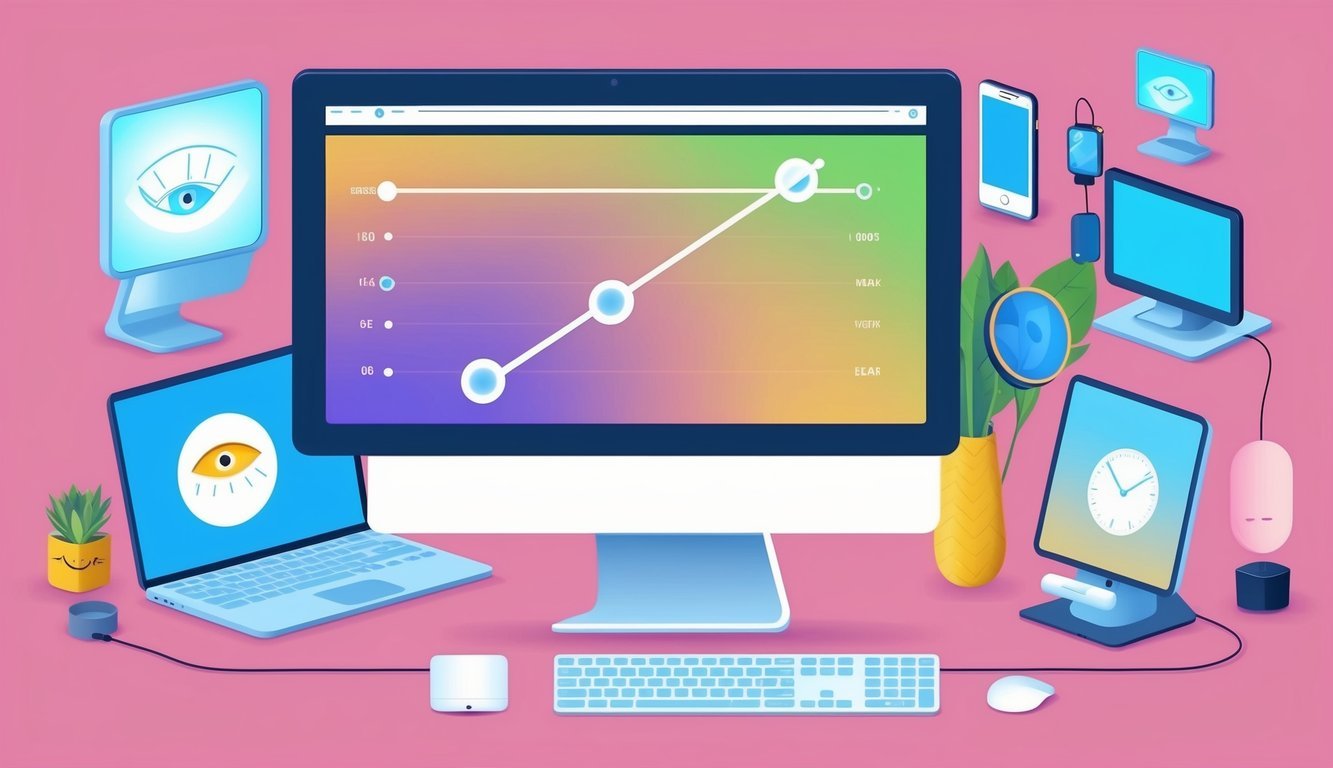
I’ve found that adjusting screen brightness is one of the simplest ways to support eye health.
If my screen glows brighter than the surroundings, it can cause my eyes to strain.
I usually match my screen brightness to the ambient light.
This means lowering it in dim environments and increasing it in brighter settings.
Additionally, I notice that higher contrast settings help me read text more easily.
Adjusting these settings can make a big difference, especially during long periods of screen time.
It’s also important to consider the glare from overhead lights.
I often try to minimize that by changing my screen angle or using curtains.
By taking just a few minutes to adjust these settings, I can make my digital experience much more comfortable.
It’s a small change, but it definitely helps in reducing eye discomfort.
3) Blink Frequently
I often find myself staring at screens for long hours, and I realize that blinking is something I don’t do enough.
Typically, we blink about 15 times per minute, but that drops to just 5 to 7 blinks when using screens.
Blinking is essential for keeping my eyes moist and reducing dryness.
When I consciously remind myself to blink more, it helps alleviate any discomfort I might feel after a long work session.
To create a habit, I try to integrate blinking into my routine.
It can be as simple as taking a quick pause to focus on blinking while I’m deep in thought or working on a project.
Over time, this practice helps me become more aware of my surroundings and keeps my eyes refreshed.
By making a conscious effort to blink regularly, I also improve my mental focus and clarity throughout the day.
This small yet intentional habit supports both my eye health and overall concentration.
Incorporating frequent blinking into my day can make a significant difference in how my eyes feel.
I’ve noticed that it helps with eye fatigue, making my time in front of the screen more comfortable.
4) Position Screen at Arm’s Length
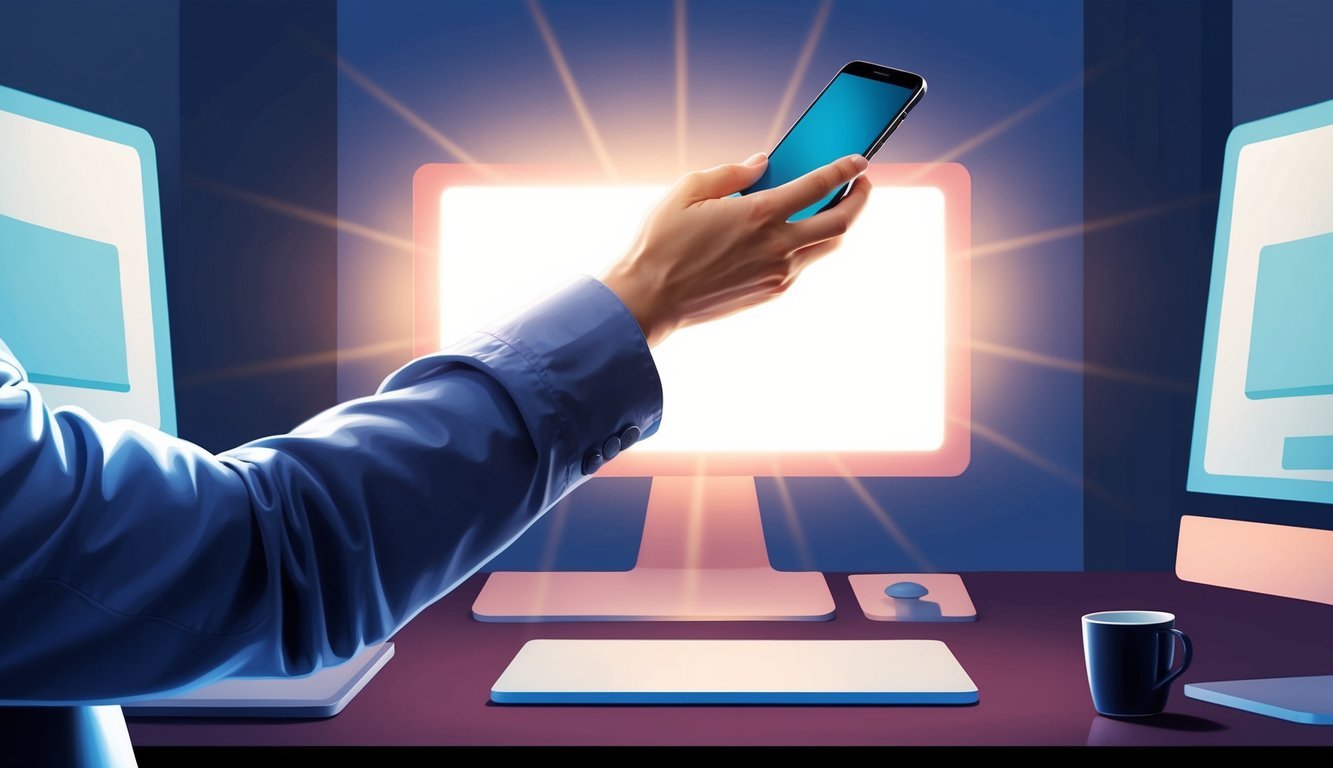
When I set up my workspace, I always make sure my screen is about an arm’s length away.
This distance, roughly 25 inches, helps reduce eye strain.
It allows my eyes to relax while I’m working.
Positioning the screen too close forces my eyes to focus harder.
Over time, this can lead to fatigue and discomfort.
By keeping the monitor at the right distance, I ease the strain on my eyes.
I also try to angle the screen slightly downward.
This position makes it easier for my eyes to maintain a comfortable gaze.
Looking slightly down reduces the exposure of my eyes’ surface, which can help with dryness.
I find that this simple adjustment can make a big difference in my comfort level during long hours at the computer.
5) Use Computer Glasses
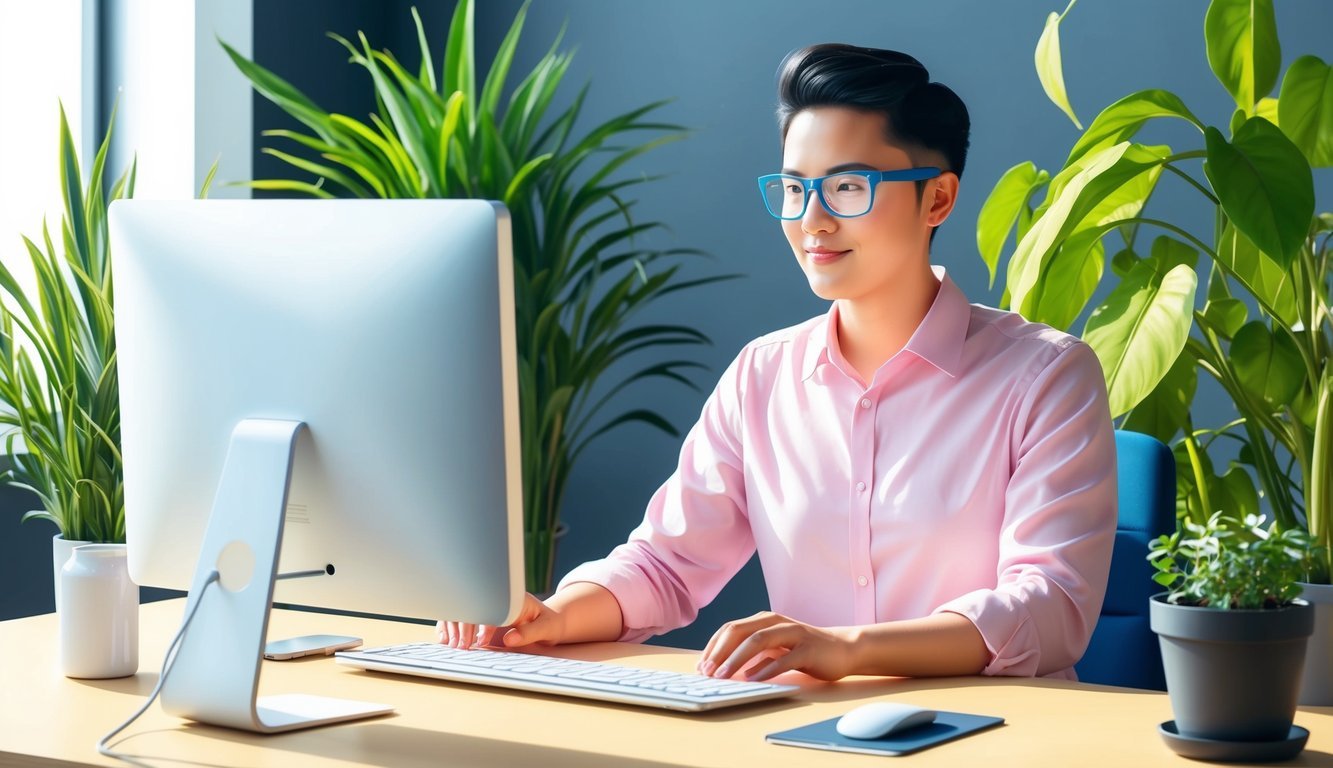
I’ve found that using computer glasses can make a big difference when staring at screens for long periods.
These glasses are specifically designed to reduce eye strain and enhance comfort.
There are different types of computer glasses available.
Single vision glasses are great if I mainly use them for computer work.
On the other hand, office lenses allow me to focus on both the screen and documents nearby.
One key benefit is that they often come with anti-reflective coatings.
This reduces glare from screens and artificial lighting, which can be really distracting.
Wearing these glasses helps me maintain a more comfortable and clear vision.
I notice less fatigue at the end of the day.
If you spend a lot of time in front of screens, consider giving computer glasses a try.
6) Take Regular Breaks
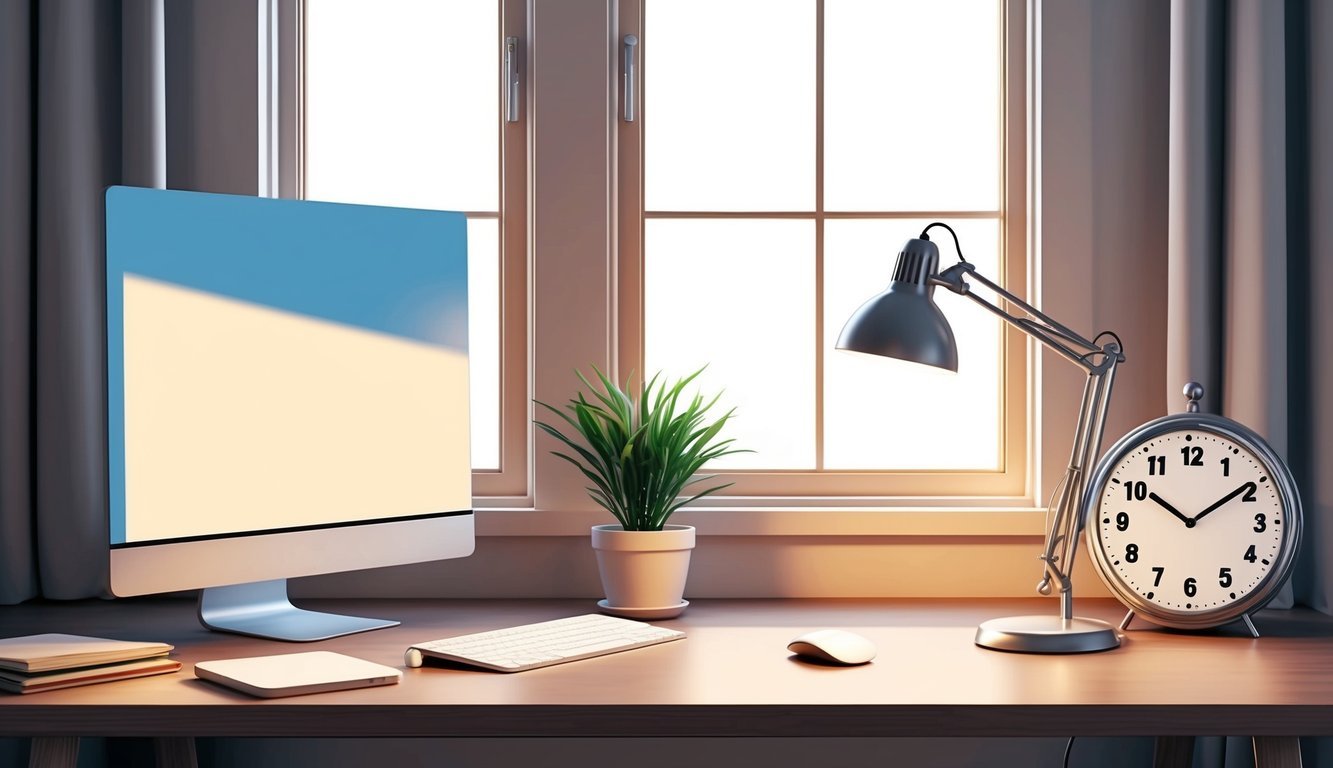
I can’t stress enough how important it is to take regular breaks when using screens.
It really helps to ease eye strain and keeps me feeling more refreshed.
I try to follow the 20-20-20 rule.
Every 20 minutes, I look at something 20 feet away for at least 20 seconds.
This little practice gives my eyes a chance to reset and refocus.
Scheduled breaks are also a game-changer.
I make it a point to step away from my screen for a few minutes each hour.
During this time, I might stretch or just walk around a bit.
Good lighting also plays a role when I take breaks.
I ensure my workspace is well-lit to reduce glare when I come back.
This helps my eyes adjust more easily after a break.
Making breaks a routine has really improved my eye comfort and focus.
I feel more productive, and my eyes thank me for it later.
7) Maintain Good Posture
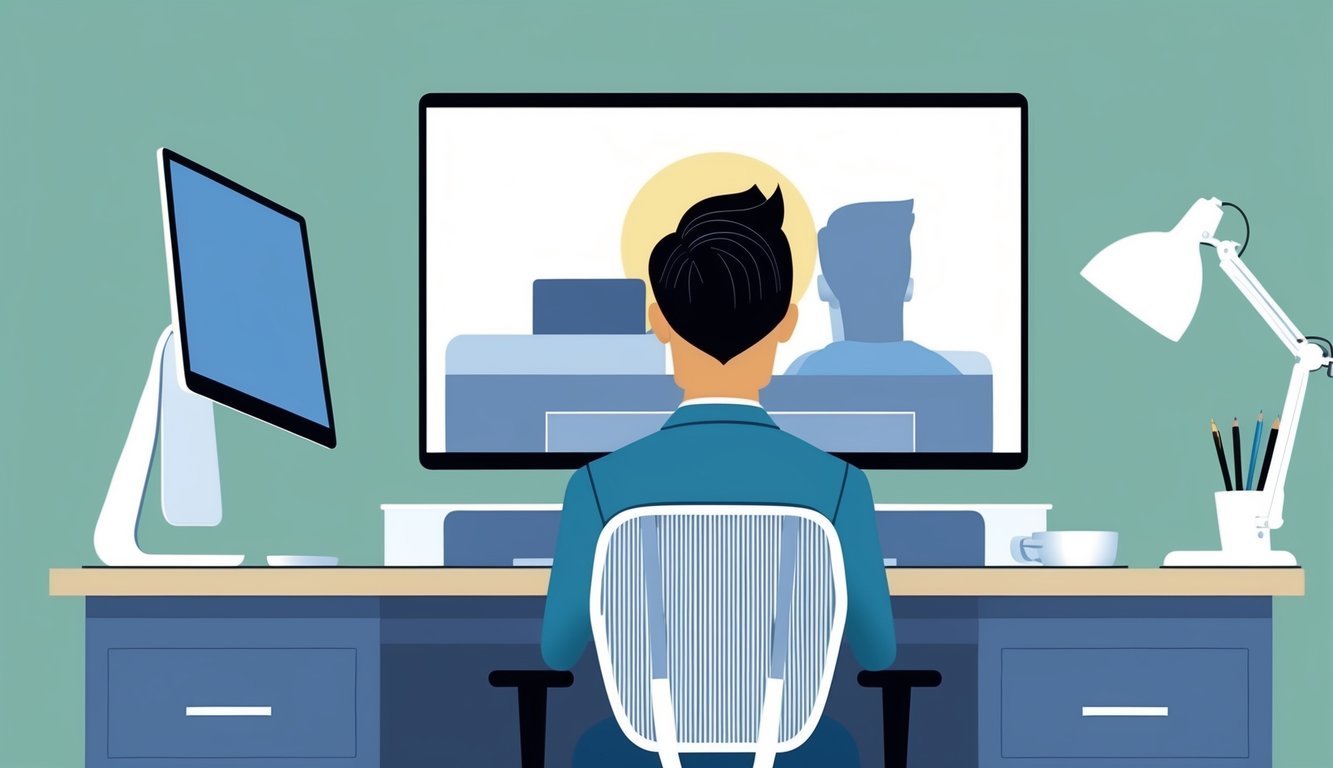
I’ve found that maintaining good posture is crucial for my eye health, especially when I’m spending long hours in front of a screen.
Sitting up straight helps reduce strain not only on my eyes but also on my neck and back.
When I align my head, neck, and shoulders, it takes some pressure off my eyes.
Slouching often forces me to lean closer to the screen, which can exacerbate eye strain.
I make it a point to keep my monitor at eye level, so I’m not looking down or craning my neck.
I also take regular breaks to stretch and reset my posture.
It’s amazing how a quick stretch can make me feel more comfortable and less fatigued.
Adjusting my chair height and using lumbar support helps keep my spine in a neutral position.
Overall, good posture promotes better circulation and reduces fatigue, benefiting both my body and my eyes.
By being mindful of how I sit and using ergonomic equipment, I can help protect my vision over time.
Understanding Digital Eye Strain
Digital eye strain is a common issue in our gadget-centric lives.
Factors like prolonged screen time and improper settings can lead to a range of uncomfortable symptoms.
Let’s break down the causes and who’s most likely to experience this condition.
Causes and Symptoms
I’ve noticed that spending hours staring at screens can seriously impact my eyes.
The main culprits are:
- Prolonged Screen Time: Staring at screens for too long without breaks can lead to fatigue.
- Poor Lighting: Working in dim conditions or with too much glare can worsen eye strain.
- Small Text: Working with tiny fonts can make my eyes work harder than necessary.
Common symptoms include:
- Dry Eyes: I often experience dryness and irritation.
- Blurry Vision: Focusing can become difficult, making my vision seem fuzzy.
- Headaches: Tension headaches are another familiar foe, usually brought on by straining my eyes.
Who Is Most at Risk?
Certain groups are more susceptible to digital eye strain.
If I’m using devices intensively for work or leisure, I’m at higher risk.
Here are some key demographics:
- Office Workers: People who spend hours in front of computers face significant strain.
- Students: With increased screen use for studying and socializing, students often struggle.
- Gamers: Extended gaming sessions can lead to fatigue and discomfort.
People with pre-existing vision problems may have greater sensitivity.
It’s essential for everyone to be aware of these risks, as digital eye strain can affect anyone using screens frequently.
Importance of Regular Eye Check-Ups
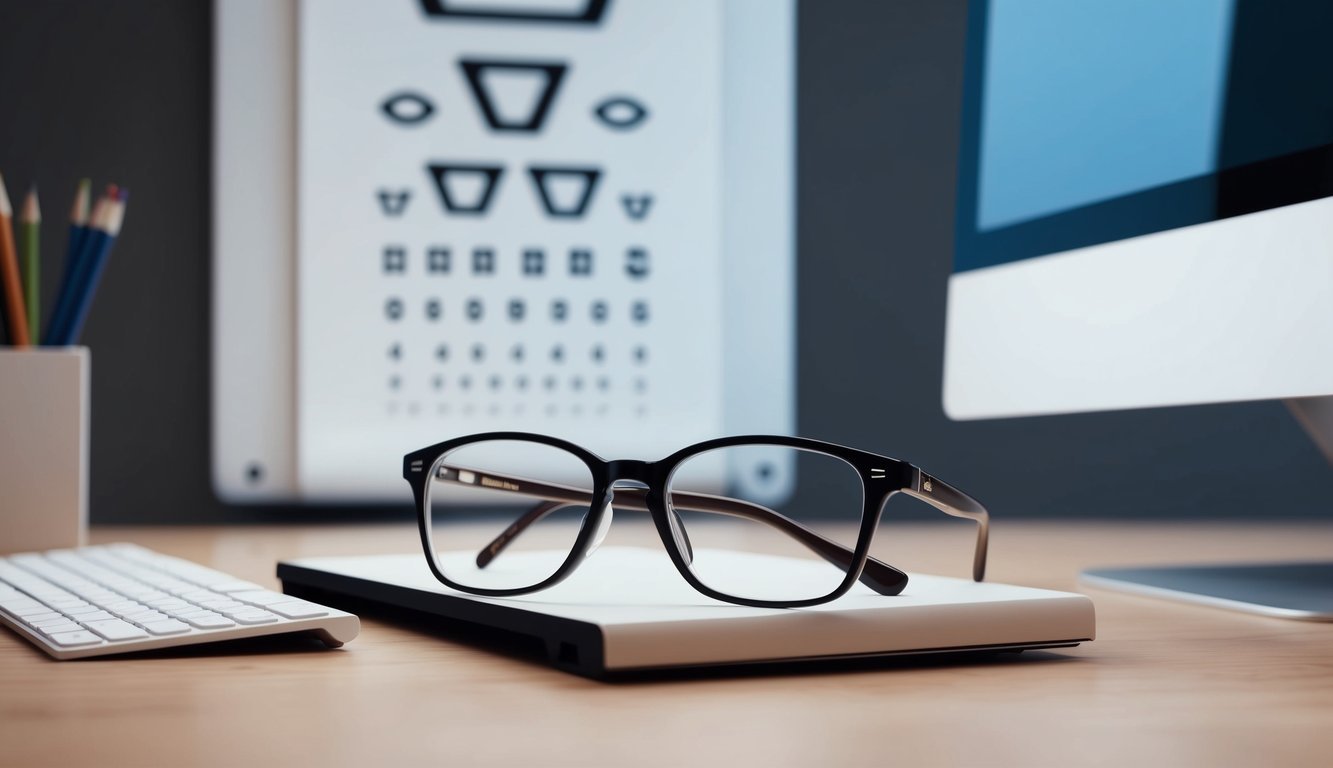
I can’t stress enough how crucial regular eye exams are for maintaining good vision.
These check-ups help catch potential issues early, which can save me from serious vision loss down the road.
During an eye exam, I have the chance to update my glasses or contact lens prescription.
My eyes change over time, and keeping my prescription current ensures I have the best vision possible.
Did you know that about 11 million Americans could see better with proper corrective lenses? Regular check-ups can help me avoid unnecessary headaches or eye strain.
Here are some important reasons to schedule an eye exam:
- Early Detection: Regular check-ups can identify conditions like glaucoma or cataracts early on.
- Visual Function: I can learn how well I’m seeing and when adjustments to my lenses might be needed.
- Quality of Life: Improved vision can significantly enhance my daily activities, from reading to driving.
For those over 60 or with a history of eye problems, I recommend getting exams every 1 to 2 years.
It’s a simple way to take charge of my eye health and ensure I’m seeing the world clearly.
So, don’t wait too long; book that appointment!

